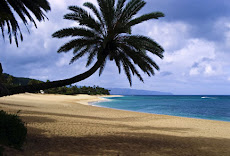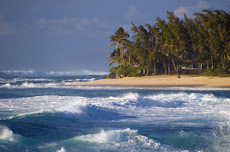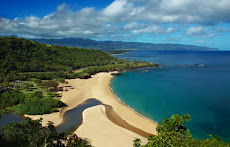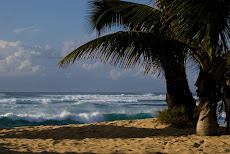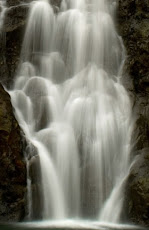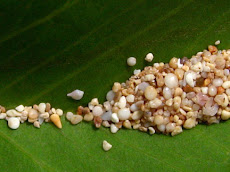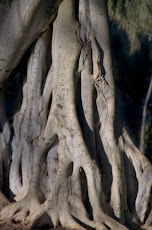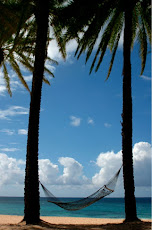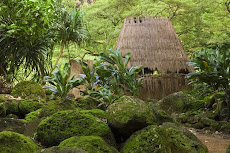News From Indian Country
Zuni will not sacrifice Salt Lake
By Suzanne Westerly
As they have for many centuries, the people from the Pueblo Nations of
Zuni, Hopi, Acoma, and Laguna, and the people from the Mescalero Apache
Nation and the Ramah Navajo Nation, still walk the ancient foot trails to
gather salt at Zuni Salt Lake for religious purposes. The Salt Lake and
the surrounding area is of central religious importance in the lives of
the Zuni and other tribal people of the area. According to the Zunis, the
salt is the flesh of Salt Mother, a deity who resides at Zuni Salt Lake.
"It is one of our most significant sacred sites, the Zuni Salt Lake, "
explained Governor Bowekaty.
The Salt Lake is fed mostly from underground. Mineral springs bubble up
from a large volcanic cinder cone in the center of the shallow lake. As
the lake rises and falls throughout the year, evaporation occurs and a
crystallized crust of sodium chloride covers the lakebed. In summer
sometimes the salt layer forms so thickly, crystal salt cones rise on the
lakebed. At that time, Zuni men travel 60 miles south from their Pueblo
to gather the salt.
Zuni Pueblo is located in what is now western New Mexico, near the
Arizona border and just south of Interstate 40. Originally, this rugged
undisturbed open desert land was traditional Zuni lands. Over the years,
large areas were taken by federal, state and private landholders. In1985
Zuni Pueblo gained ownership of the lake and 600 acres of land under
federal law through a land exchange with the state of NM and the U.S.
Bureau of Land Management.
SRP Wants a Coal Mine
The Salt River Project (SRP) Agricultural Improvement and Power District,
based in Tempe, is the second largest utility in Arizona. Since the mid-
1980's, SRP has been trying to secure their very own coal mine to fuel
their Coronado Generating Station in St. John's, Arizona.
The proposed site for SRPs very controversial mining project is about
ten miles from the Zuni Salt Lake. SRP plans to pump water out of the
aquifer below the lake mainly for dust suppression. Many hydrologists
agree this will effect the lake, possibly causing irrevocable damage to
the unique ecosystem.
Mining 80 million tons of coal over the next 50 years is the goal of SRP.
The utility company also plans to build a 44-mile railroad corridor to
carry the coal across the NM state border to the Coronado Generating
Station in eastern Arizona.
The Neutral Zone
Since the State of NM first approved SRPs permit in 1996, federal
officials have determined that the 182,000-acre area around the Salt Lake,
called the Neutral Zone, is eligible for listing under the National
Historic Preservation Act. The area is called the Neutral Zone because
traditionally Zunis and other Indian tribes suspended hostilities against
each other while in this area because of the importance to all of them of
gathering salt at the lake.
This mine if approved by the federal government, will cause much
destruction to almost 18,000 acres of land that holds over 550 documented
ancient Zuni sites and is within the Neutral Zone. The Pueblo is concerned
that potentially thousands of ancestral burials will be disturbed. The
Zunis position is that burial sites should never be disturbed.
The railroad would also destroy parts of the ancient trails. Zuni Pueblo
Governor Malcolm Bowekaty said, "The EIS report states they [SRP] would
run the railroad tracks right over burial sites. Yes, they are also going
to dig burial sites up. I have a map that our own archeological people
made after they surveyed that area. We have a map that shows where the
proposed open coal pit mine will be and the disturbed area." When he
overlays the crews walk through findings of the surface visible sites in
the area over the map showing the areas that will be disturbed, "the
railroad corridor is actually going through some of them. So given that
and knowing the terrain around here, surface visible means that there are
ruins underneath and more than likely there will be bodies and so that is
one of the things we are trying to emphasize."
Letting outsiders know where certain sites are located within their
lands is a difficult decision for tribal Nations to make. According to
Bowekaty the Zuni decided to disclose the Zuni Salt Lake locations to
enable the tribe to have the area made eligible for the National Historic
Preservation Act. "We have worked with the Keeper saying this area is open
for public knowledge although the very esoteric stuff should not be open
for public review, and they have honored that. We have looked at the
Native American Graves Repatriation Act (NAGPRA) as a way to stop the mine,
but NAGPRA looks more at discovery and research instead of protection,"
said Bowekaty.
The Permit Process
According to Bowekaty, when New Mexico (NM) Mining & Minerals Division
gave SRP a five-year permit in 1996 it lacked a lot of conditions; in
particular, Zuni's concerns. "For instance on the original submission the
cumulative hydrological impact area assessment did not include the Zuni
Salt Lake," said the Governor. For many years, Zunis have managed to stop
any actions from beginning at the proposed site. They are determined to
continue their strong opposition.
At the recent hearing in July, despite all the evidence of the majority
of hydrology reports showing the lake's water level will be impacted, and
evidence that the mining operation is not in compliance with government
regulations, NM Mining & Minerals Division renewed SRP's permit.
"The fact that it was renewed was a loss for the tribe," said the
Governor. Zuni representatives continue to point out basic questions about
the adequacy and the accuracy of the Environmental Impact Statement (EIS)
as well as the Final EIS. Hydrological findings, the lack of consideration
of Zunis traditional cultural properties and the archeological issues are
issues that must be examined further. "So a re-review of the NM Mining &
Minerals Division is warranted," said the Governor.
SRP Claims Water To Keep the Dust Down
Zunis believe that by taking water from the Dakota Aquifer below the
proposed coal mine area, the level of the water in the Salt Lake will be
affected.
In 1991, SRP declared water rights to several aquifers near the mine. NM
Mining & Minerals approved a permit allowing SRP to pump an average of 85
gallons of water per minute for 40 years from the aquifers. In 1996 NM
State Engineer's Office declared the Gallup Basin, where the proposed mine
site is, closed, requiring everyone who had been using water before that
date to notify the state of how much they were using. SRP filed a notice
claiming they had the right to use up to 990 gallons of water per minute
from old livestock wells. According to the NM State Engineer's Office, if
they want to start using the old livestock wells for mining, they must
file a permit application, and they haven't.
Governor Bowekaty said, "Because of the tribes studies, the expert
hydrologist, and the tribes insistence through the Department of Interior
(DOI), Bureau of Indian Affairs (BIA) at the Washington, D.C. office, we
got the Bureau to do an independent study on the hydrology issue. The DOI
contracted with a couple of Professors from the University of New Mexico
(UNM), to do an independent review on behalf of the BIA. They raised a lot
of questions that added to Zuni's argument."
Hydrology Reports Support Zunis Assertions
SRP assures the Pueblo that monitoring wells between the mine and the
lake will warn of an impending drawdown and allow it to switch to another
source of water. Yet SRP representatives go on to say, they have reserved
the right to take all of the mining water from one aquifer, if necessary.
Dr. Phil King, an engineering professor at UNM, commissioned by the BIA to
do an independent hydrological report stated that the monitoring wells are
in the wrong locations.
Under NM Governor Gary Johnson's Tribal Consultation Policy, Zuni
directly requested a government to government consultation with the Mining
and Minerals Division, thus allowing Zuni to emphasize their role in the
decision making process.
The federal lands mining permit SRP needs has been pending for over a
year. Zuni Pueblo has requested a meeting with DOI Secretary Norton, but
so far, the Pueblo has been ignored. "We have had the D.C. office of the
BIA actively supporting us," said the Governor, "In fact at the last
government to government consultation the BIA, through a spokesperson
cleared through the DC office specifically stated that they stand behind
their independent hydrology report that actually supports Zuni's
assertions. They also stipulated that 'we support Zuni's strategy and
activities.' So they are finally saying in an indirect way that they
oppose the mine because that's Zuni tribes primary position."
Promoted by SRP as Jobs and Profit$ for NM
NM Mining & Minerals approved SRP's second permit although there is
sufficient evidence to show the harm it will likely do to the lake. It is
also noteworthy that the coal at this site is a very low-grade coal. Low-
grade means digging up more earth to meet the goal of the quantity of coal
needed.
Promoted by SRP as jobs for local people, Bob Barnard, manager of the
Fence Lake Project for SRP has said the mine will employ between 60 -100
people with the "right" skills. Barnard has also been quoted saying there
would be hundreds of jobs.
New Mexico has already received $10 million, from SRP and will receive
about $60 million to $70 million in royalty payments from coal sales if
the mine opens. New Mexico will benefit from another $60 million in
various forms of taxes.
"If you are looking at royalties, the Navajo Nation and the Hopi Nation
should be as equally compensated as the state of NM on royalties," said
the Governor. The Hopi and Navajo Nations have had Peabody Coal Company
mining coal on their lands since the 1960's, and using considerable
amounts of pristine water from the N-Aquifer.
Already fighting this project for almost 20 years, Zuni Pueblo vows to
continue fighting for their culturally significant Salt Lake. First, the
Zunis are planning a lawsuit in state court in Santa Fe to challenge the
NM Mine Commission's approval of the mine. "If things don't go our way,"
said Governor Bowekaty, "of course we are going to consolidate the appeal
of the new permit into federal court."
Native American Times is Copyright c. 2000-2001 Oklahoma Indian Times,Inc.
Native News





